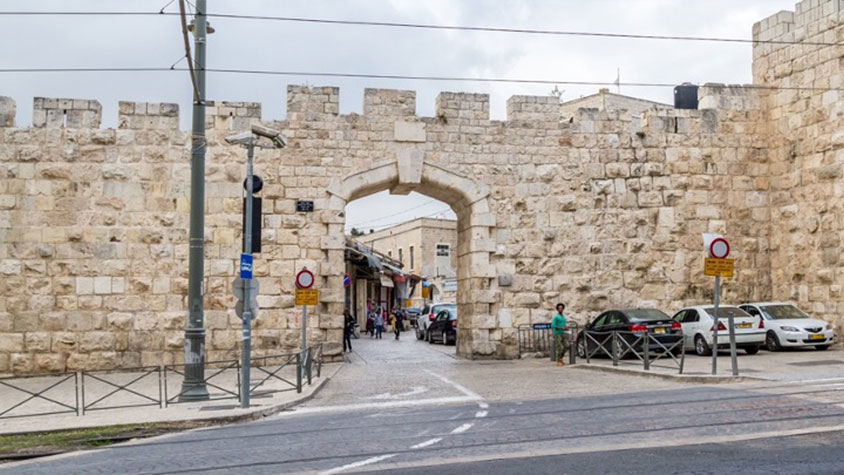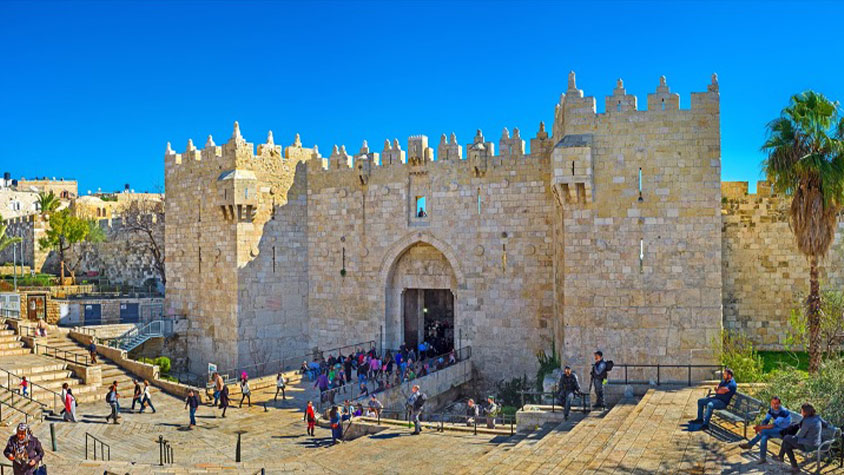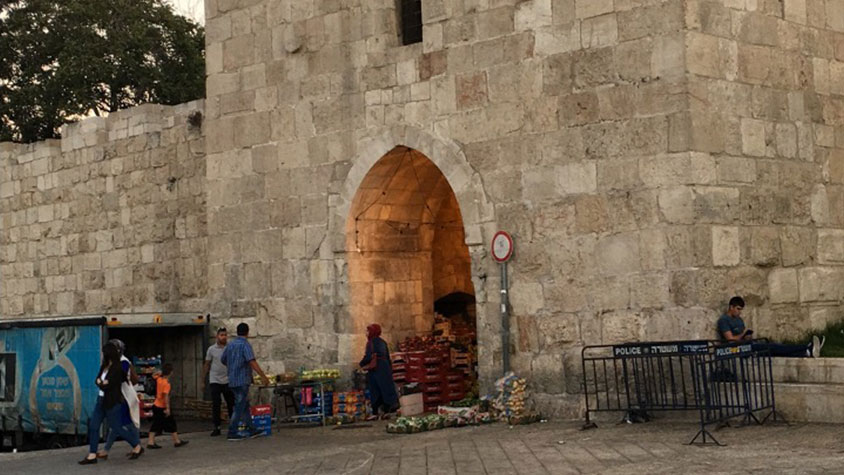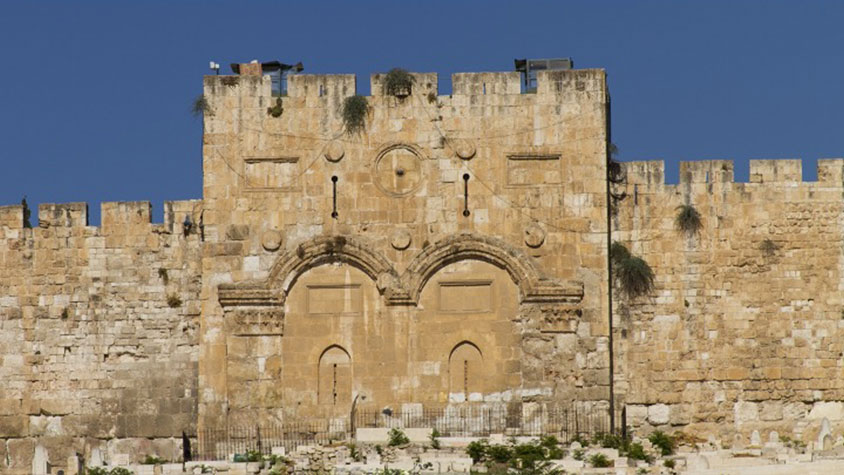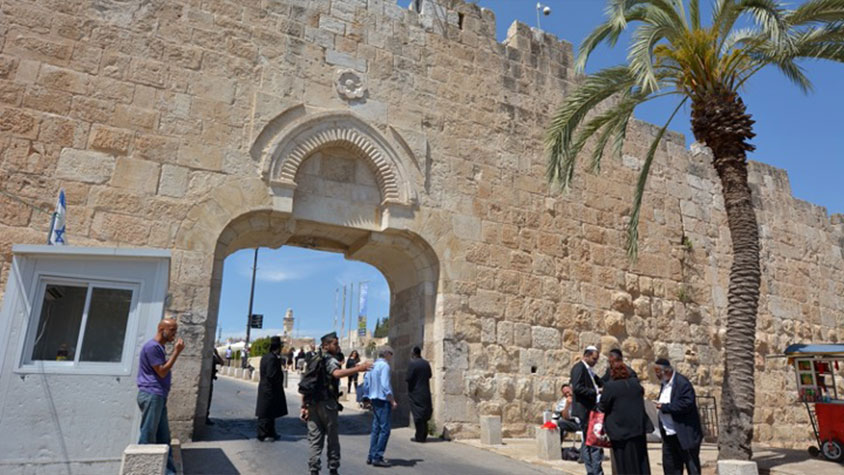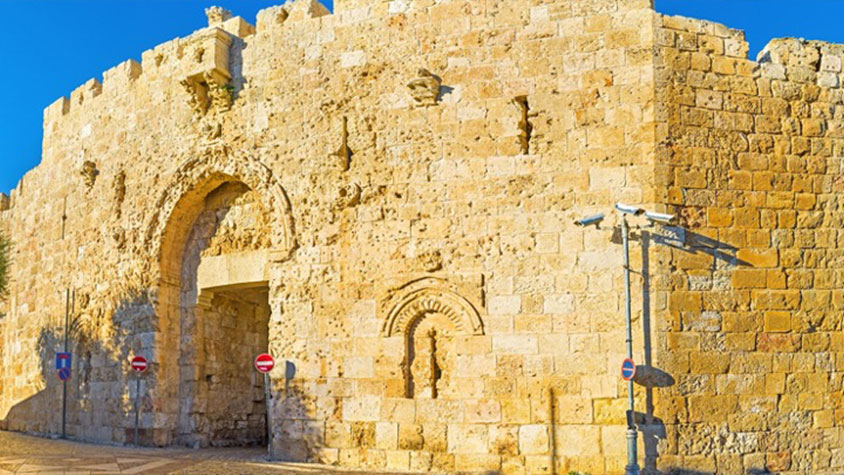While there are many stories connected to the walls of Jerusalem, it is the story of its gates which holds special significance. Currently, there are seven open gates and four sealed gates. The open gates still serve residents and visitors streaming to Jerusalem’s markets, as well as entry to sacred and historic sites.
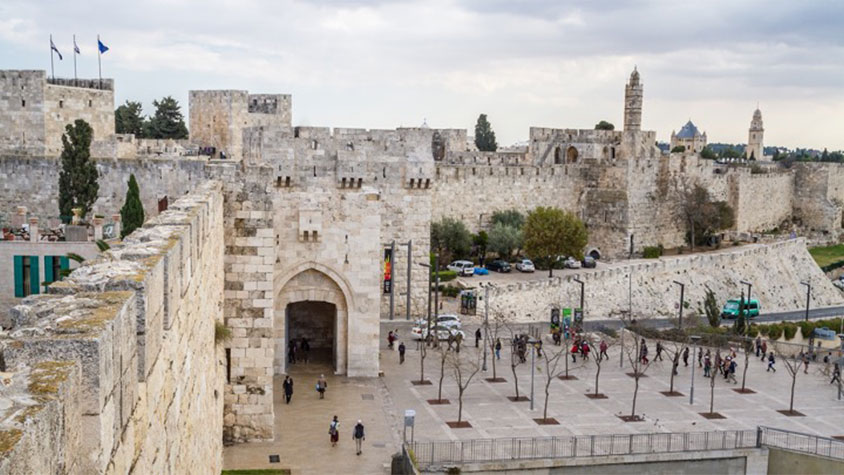
The main entrance to the Old City is the Jaffa Gate, and was built by Suleiman in 1538. It is the only gate on the western side of the Old City leading to the Muslim and Armenian quarters. The name in Arabic, Bab el-Halil or Hebron Gate, means “The Beloved” and refers to Abraham, the beloved of God who is buried in Hebron. The gate, on the western side of the Old City. The road leading from this gate leads to the port city of Jaffa. A road allows cars to enter the Old City through a wide gap in the wall between Jaffa Gate and the Citadel. This passage was originally built in 1898 when Kaiser Wilhelm II of Germany visited Jerusalem. The ruling Ottoman Turks opened it so the German Emperor would not have to dismount his carriage to enter the city. This gate was also the famous scene of the English General Allenby’s entrance in 1917.
The New Gate to the Christian Quarter is so named because it was constructed relatively recently, in 1889. The New Gate was built with permission of Sultan Abdul Hamid II and is located near the northwestern corner of the city.
Located on the northern wall, the Damascus Gate is the busiest and most magnificent of all of Jerusalem’s gates. This gate to the Muslim Quarter consists of one large center gate originally intended for use by persons of high station, and two smaller side entrances for commoners. Sometimes called the Shechem Gate by the Jews, the Arabs remember this gate as the “Gate of the Column” because of the tall pillar that stood in this gate’s plaza during the Roman and Byzantine period. Kenyon’s excavations underneath this Turkish gate found remnants of a triple-arched gateway dating to the time of the Roman Emperor Hadrian (AD 135).
Herod’s Gate (Sha’ar Hodus) provides entrance into the Muslim quarter through the northern wall. In Hebrew the gate is named Sha’ar Perachim or Flowers Gate.
The Lions Gate, located in the east wall, leads to the Via Dolorosa. Near the top of the gate are four figures of lions, two on the left and two on the right. Legend has it that Sultan Suleiman placed the figures there because he believed that if he did not construct a wall around Jerusalem he would be killed by lions. Israeli paratroops from the 55th Paratroop Brigade famously stormed through this gate during the Six-Day War to conquer the Temple Mount, after which they unfurled the Israeli flag above the Old City. This gate is also call St Stephen’s Gate because of the tradition that the first Christian martyr was stoned outside this gate. However, an earlier tradition locates this execution north of the city.
The Golden Gate (Mercy Gate) faces the Mount of Olives on the eastern side of the Old City. This sealed gate on the eastern side was built approximately AD 640 either by the last of the Byzantine rulers or by the first of the Arab conquerors. According to Ezekiel’s prophecy (Ezekiel 44), Messiah will enter Jerusalem through this gate. To prevent this, the Muslims sealed the gate during the rule of Suleiman. Some archaeologists believe that an earlier gate is preserved underneath the current gate.
The Dung Gate is located along the south wall, this gate is closest in proximity to the Western Wall. The gate received its name because starting in the 2nd Century, refuse was hauled out of the city through this gate.
The Zion Gate, on Mt Zion in the south, leads to the Jewish and Armenian quarter. The entrance still bears the pockmarks of weapons fire from the Arab and Israeli battles in the 1948 War of Independence. This gate was also one of the main gates used by the Israel Defense Forces in 1967 to enter and capture the Old City. This gate is also known as the Gate of the Prophet David because of the traditional location of David’s tomb on Mt. Zion. During the medieval period it was called the Gate of the Jewish Quarter.
Originally posted at israeladvantagetours.com

